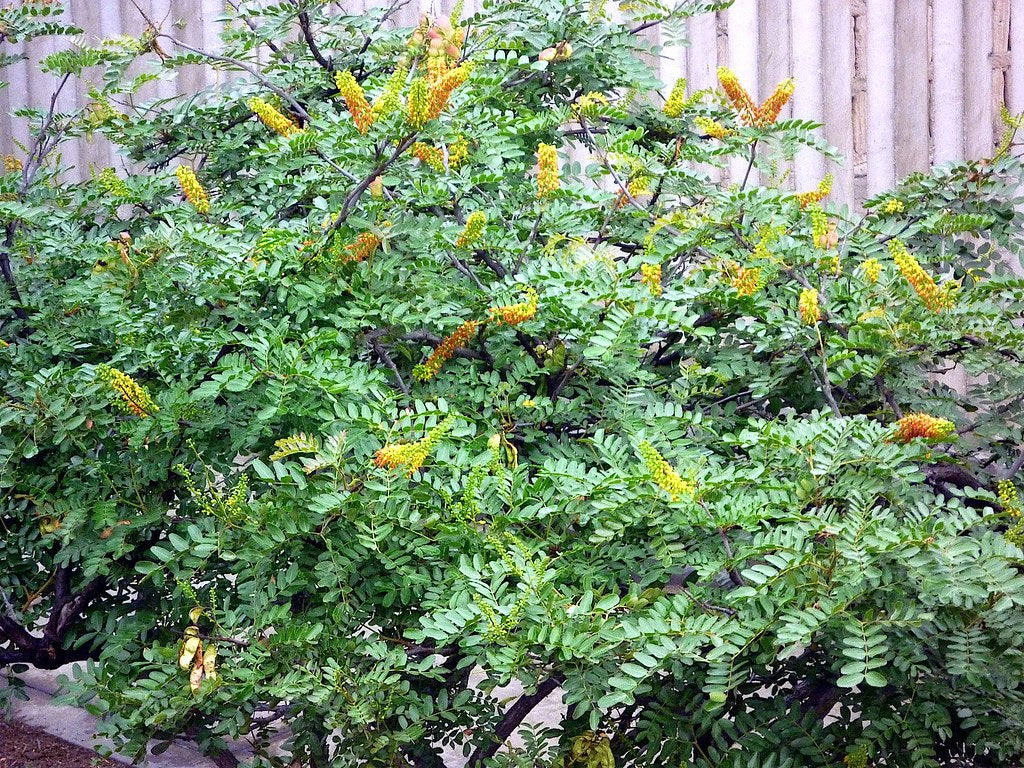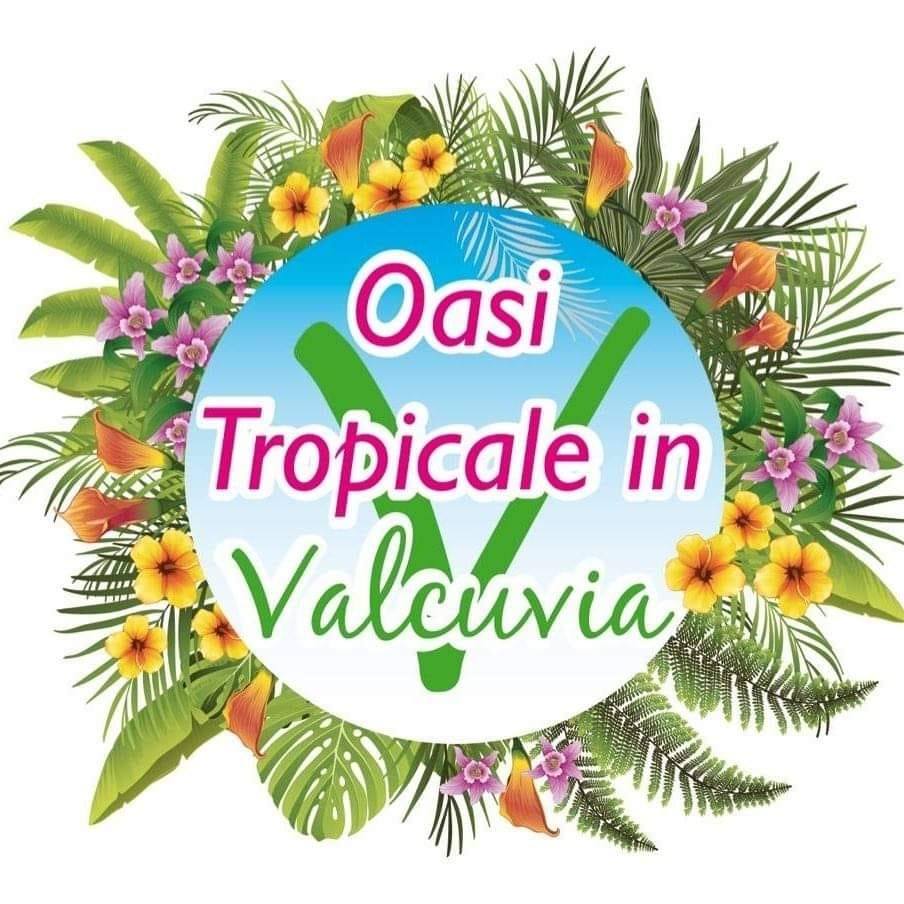-
CAESALPINIA SPINOSA (TARA GUM)
CAESALPINIA SPINOSA (TARA GUM)
Couldn't load pickup availability
MINIMUM TEMPERATURE SUPPORTED -1°C
(DATA REFERS TO AN ADULT PLANT IN OPTIMAL HUMIDITY AND SOIL CONDITIONS)
From Wikipedia, the free encyclopedia
The thorny tare , commonly known as tara ( quechua ), [1] also called Peruvian carob [2] or thorny carob , [2] is a small leguminous tree or thorny shrub native to Peru . [3] T. spinosa is cultivated as a source of tannins based on a galloylated quinic acid structure . [4] This chemical structure was also confirmed by LC–MS . [5] It is also grown as an ornamental plant for its large colorful flowers and pods.
Names and taxonomy
Its common names include spiny holdback, tara , taya , and algarroba tanino (Peru).
Thorny Tara belongs to the Fabaceae family , the Caesalpinioideae subfamily and the Caesalpinieae tribe . [6]
Description
The spiny tare typically grows 2–5 m (6.6–16.4 ft); its bark is dark gray with scattered thorns and hairy twigs. The leaves are alternate, evergreen, without stipules , bipinnate and without petiole and rachis glands. The leaves consist of three to ten pairs of primaryleaflets less than 8 cm (3.1 in) long and five to seven pairs of subsessile elliptical secondary leaflets, each about 1.5–4 cm (0.6–2 in) long inches). The inflorescences are terminal racemes 15–20 cm (5.9–7.9 in) long, many flowered and covered with tiny hairs. The flowers range from yellow to orange with 6 to 7 mm petals ; the lower sepal is boat-shaped with numerous long marginal teeth; the stamens are yellow, of irregular length and slightly protruding. The fruit is an indehiscent pod flat, oblong, about 6–12 cm (2.4–4.7 in) long and 2.5 cm (0.98 in) wide, containing four to seven round black seeds, which redden when ripe. [7]
Distribution and habitat
Thorny Tara is native to Peru and can be found growing throughout northern, western, and southern South America, from Venezuela to Argentina. It has been introduced into the drier parts of Asia, the Middle East and Africa and has become naturalized in California. T. spinosa grows in almost rainless lomas or foggy oases of the Peruvian coastal desert. [8]
Generally resistant to most pathogens and parasites, it grows at altitudes between 0 and 3,000 m (9,800 ft) above sea level and tolerates dry climates and poor soils, including those rich in sand and rocks. To propagate, seeds must be scarified (treated to break physical dormancy) and young plants transplanted into the field 40 cm (16 in) high; the trees begin to produce after 4-5 years. The ripe pods are usually harvested by hand and generally sun-dried before processing. If well watered, the trees can continue to produce for another 80 years, although their maximum production is between 15 and 65 years. [9]
Uses
Industrial
Thorny tara pods are an excellent source of tannins (tare tannins) most commonly used in the production of automotive and furniture leather. [10] This growing industry is developing around their production in Peru. Some producers have their own plantations to ensure consistent quality.
Tara tannin derivatives are proposed as an antifouling against marine organisms that can grow on ship hulls. [11] These tannins are of the hydrolysable type . Gallic acid is the main constituent of tare tannins (53%) and can be easily isolated by alkaline hydrolysis of the plant extract. [12]
Quinic acid is also a constituent of tare tannins. [13] Its tannins are colorless or clear making them suitable as a premordant in dyeing cotton and other cellulose fibers. [14]
The tree can also be a source of lumber and firewood and as a live fence.
The seeds can be used to produce black dye, while dark blue dye can be obtained from the roots.
Food additive
Tara gum is a white or beige, nearly odorless powder produced by separating and grinding the endosperm of T. spinosa seeds . [2] Tara gum consists of a linear backbone of (1–4)-β-D-mannopyranose units linked by (1–6) linkages with α-D-galactopyranose units. [15] The main component of rubber is a galactomannan polymer similar to the main components of guar and locust bean gums widely used in the food industry. The ratio of mannose to galactose in tara gum is 3:1. [16] Tara gum has been deemed safe for human consumption as a food additive. [17]
Tara gum is used as a thickening and stabilizing agent in numerous food applications. A solution of tare gum is less viscous than a solution of guar gum of the same concentration, but more viscous than a solution of locust bean gum . Furthermore, tara gum has an acid stability intermediate between carob gum and guar gum. Resists the depolymerization effect of organic acids up to pH 3.5. This rubber is also stable at high temperature treatment, up to 145°C in a continuous process plant. Tare mixes can be produced with modified and unmodified starches that have improved stabilization and emulsification properties and are used in the preparation of ready-to-eat foods, such as ice cream . An example is the American ice cream brand Breyers .
The European food additive number for tare gum is E417. Tara gum is listed on the Canadian List of Permitted Emulsifying, Gelling, Stabilizing or Thickening Agents (Lists of Permitted Food Additives) as entry T.2B. [18]
Health problems of Tara flour
On July 19, 2022, food company Daily Harvest identified tara flour, which is derived from the seeds of the Tara thorn , [19] as the ingredient that had made hundreds of its customers sick. [20] A handful of lawsuits have been filed against the company. [21] The chemical compound hypothesized to be responsible is baikiain . [22]
RICHIEDI FOTO
RICHIEDI FOTO
Scrivimi su WhatsApp al +393472475878 per ricevere foto piante in vendita




